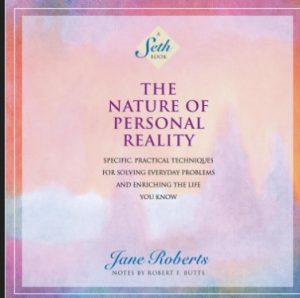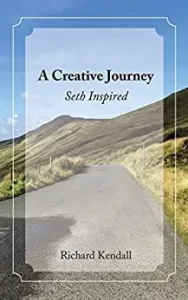 By KEN KORCZAK
By KEN KORCZAK
A teenage ‘hippie’ in New York City was psychologically scarred and headed for darkness when an unexpected invitation changed everything.
It was the mid-1960s, and Richard Nissenbaum was a disaffected Jewish teen living in New York City.
After his bar mitzvah at age 13, he lost all interest in religion. He was at odds with his parents and alienated from an American society already circling the bloody drain hole of the Vietnam War.
The shadow of draft loomed in his future.
Richard felt unmoored from his life in the Concrete Jungle of the Big Apple. In many ways, his existence on this planet seemed to be some kind of tragic mistake.
But things were about to get worse for Richard Nissenbaum.
A BRUTAL RAPE
One night, he was hanging out on the sleepless, hip and often wild counterculture streets of 1960s Greenwich Village. He sat down on a city bench next to a person he described as a “charismatic black man” drinking a bottle of wine.
The man shared his wine with the gangly teenager and then convinced him to “continue the party” back at his apartment. As soon as they arrived at the flat, the man pulled out “a humongous butcher knife” and commanded Nissenbaum to strip.
The man then proceeded to violently rape the 15-year-old repeatedly throughout the night. Nissenbaum eventually escaped the apartment and ran off into the streets. He caught a bus home. He did not tell his parents what happened nor anyone else.
HEROIN AND A CULT
Now always troubled — and with the draft board breathing down his neck — Nissenbaum began to experiment with heroin at 19. He became a fast addict. Even so, he was able to shake the needle before reaching the point of no return by hitchhiking out to California with only the clothes on his back and a few rumpled dollars in his pocket.
When he returned to New York, Nissenbaum traded his heroin addiction for the control of a cult leader by the name of Marcel. Nissenbaum gave over his life to the dubious quasi-cosmic teachings of Marcel — but you might say that Nissenbaum “got lucky” this time.
That’s because his energetic and healthy 40-something cult leader inexplicably dropped dead one day on the streets of New York. Marcel’s followers were suddenly free, but not really free. For example, the cult leader’s death left Richard Nissenbaum unmoored and disaffected yet again, now adrift without a mind-control guru to shape his life for him.
AN UNEXPECTED INVITATION
Just as Nissenbaum was grasping for the next magical ring to inject meaning into his life, he received an unexpected invitation.
A friend asked him to come along on a 240-mile drive from New York City to Elmira, a city of about 70,000 situated on the border of New York and Pennsylvania.
The purpose of the trip was to attend an “ESP class” conducted by a writer named Jane Roberts. Beginning in 1963, Roberts, then an up-and-coming science fiction author and noted poet, began channeling a “disincarnate energy essence personality” who identified himself as “Seth.”
I’ll return to Nissenbaum in a bit, but briefly:
GREATEST PSYCHIC OF THE 20TH CENTURY?
Jane Roberts is often called the “founder of the New Age movement” thanks to the many books she dictated via mediumistic or psychic channeling beginning in the early 1960s.
In a trance state, Roberts channeled 11 lengthy books written by Seth. She could not hear or remember what she said as she served as a conduit for this advanced being. Her husband, artist Robert Butts, sat by and took copious word-for-word notes.
In addition to the Seth books, Roberts published 10 or 12 of her own books during the 20 years she spoke for Seth. Today, the legacy publisher of the Seth material is Rick Stack. He was one of the early members of Jane’s famous “ESP classes.”
Stack now puts the tally of Seth/Roberts books at 41 total. After Jane Robert’s death at age 54 in 1984, her husband asked Mr. Stack to take on the monumental job of publishing all the stuff that never made it into print while Jane lived.
The complete collection of all her documents is archived at Yale University. Yale curators report that the Jane/Seth material is the second-most viewed archive collection at the university. Seth and Jane’s books have sold some seven million copies worldwide.
But the Seth phenomenon also spun off a small cottage industry of “Seth Inspired” books. Most of these were written by the people who populated Jane’s ESP classes she conducted from the late 1960s to about 1979 or ’80.
Several of them wrote books that combined their experiences with Jane/Seth along with their own stories of consciousness exploration. Some of the most notable include the aforementioned publisher Rick Stack, newspaper journalist Sue Watkins, the poet Berrie Gellis, prolific author Linda Madden Dahl and Richard Kendall.
That last name is important — because Richard Kendall is Richard Nissenbaum.
TWO SETH-INSPIRED GEMS
Richard Kendall died “unexpectedly” in 2020, but he left behind several self-published books, including two I will mention here today. They are:

And:

Both are gracefully written and reveal to me a man who may have started out his young adult life as a rape victim, heroin addict and cult member but found a way to overcome and move forward.
Based on his books, I ascertain Richard Kendall to be a person who found, if not enlightenment, genuine peace of mind. That started by abandoning his dead-end penchant for seeking answers from “life fixes” outside himself –- gurus, drugs, money, relationships and the like.
Those not familiar with Seth might assume that Richard Kendall was up to his old ways by joining the Jane Roberts ESP group after the death of his former guru. Maybe he just went shopping for a replacement and replaced Marcel with Seth?
But Jane/Seth were exactly NOT that — not a cult, not a guru, not a fad self-improvement scheme, not a quasi-religion — none of that! I’ve read all 41 Jane/Seth books, and I can say without a doubt that the entire body of work can rightly be recognized as perhaps the ultimate example of an “anti-cult” and “anti-guru” approach.
Indeed, the teachings of Seth were the precise remedy required for a guy like Richard Nissenbaum Kendall. That’s because Seth — in speaking directly to Richard in ESP class— told him flat out to “stop looking outside himself” and to his own “natural access to the inner knowledge that is every person’s birthright.”
Seth told Richard to calm his mind and direct his consciousness inward. Then, when the noise and chatter of the ego-raging Self are quieted, Seth told Richard that he could connect with his own “inner voices” and unlock the vast wisdom within his own limitless and creative psyche — and that this would be the doorway to the source of deep, universal wisdom.
In these two short books, The Road to Elmira and A Creative Journey, Kendall tells his story of that often grueling 240-mile drive from New York City to Elmira in a jam-packed car with his “long-haired hippie friends” to attend Jane’s ESP class about once a week to sit at the feet of Jane/Seth and absorb the teachings.
When I say, “sit at the feet,” that was literally the case. Jane and her husband provided few chairs for guests in their home, a spacious double apartment on the second floor of a Victorian abode. Kendall said he most often chose a place on the floor next to Jane’s wooden rocking chair as she entered a trance state and spoke for Seth.
She did more than channel Seth, however. Jane also exhibited a different mode of trance in which she spoke in an exotic language called “Sumari.” She did more than speak in Sumari. She often delivered Sumari in the form of singing.
Kendall described Jane’s Sumari this way:
“A psychic family or guild of consciousness whose members worked together through the centuries to help mankind. There was also a Sumari “language,” although not a language in the usual sense since it had never been verbally spoken by any group of people in our history.”
When Jane launched into Sumari, the effect on the class members was profound. It prompted many of them to enter altered states of consciousness, caused them to suddenly remember past lives or sent them on inner psychic journeys that revealed all manner of revelations.
Some people reported having out-of-body experiences while Jane sang in Sumari. Others began weeping as old and repressed emotional scars were re-opened but then healed. Others felt blissful and carried away.
MORE LIGHT THAN DARKNESS
Finally, I want to make sure to remind readers that Kendall’s books are anything but dark and filled with pages of his grappling with the darkness of drug addiction, rape and cult ensnarement.
In fact, he deftly dispatches these horrific incidents in his life using just two or three pages for each. The rest of the narrative consists of delightful tales, anecdotes and clever metaphors that demonstrate how Seth’s ideas were a launching point for Kendall to reinvent himself and send him down a path of joy, learning and inner discovery — and, yes, ongoing problems and life challenges.
The effect of reading these two books for me was meeting the mind of a light-hearted man buoyed by humor. He offers profound ideas that never devolve into lecturing. Both books are uplifting illustrations showing how one troubled young man found hope and the joy of life in a way he never expected.
NOTE: For more reviews of paranormal literature, see: KEN-0N-MEDIUM
